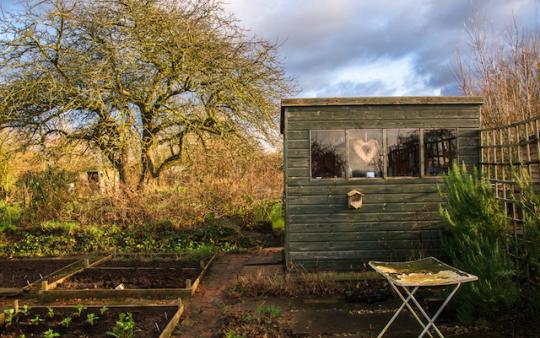Permaculture design is an eco-conscious landscape that mimics the patterns and relationships found in nature, while also yielding an abundance of food. It is a low maintenance and sustainable form of agriculture that promotes greater environmental bio-diversity. It is built on a foundation that we care for our planet, care for our people, and care to share.
The reality is that resource depletion and environmental degradation are ongoing. People have a false sense of security in our current systems and have forgone their need to be self-reliant. It has disabled the drive for public initiatives and policies, which could assist with these necessary adaptations. Therefore the main objective of permaculture is to re-develop how we think about how we live day-to-day in order to protect future generations.
A conceptual framework can help understand permaculture in practice. For example, caring for a child is much like caring for nature. You provide it with care, its intrinsic needs, nourishment, and a hope that one-day it will be able to look after itself. Nature is similar.
Today we know most health ailments are caused by epigenetic changes from environmental factors including food, drugs, and exposure to toxins. As a parent you should care for the environment your child grows up in. It will shape them.
So, just as you take the time to nurture your child, challenge yourself to take an equal time to care for the Earth. Educating our children about corrective changes is so important to ensure no further strain on the system.
The following are 12 guiding principles that will help you connect with your roots.
Permaculture Principles
OBSERVE AND INTERACT
A relationship with nature will help you draw inspiration, design ideas, resources, and offer a better understanding of your environment.
CATCH AND STORE ENERGY
There is limited time to catch and store energy so make you're efforts less work and high yielding. Do not ignore the opportunities to capture local flows of both renewable and non-renewable forms of energy including sun, wind, runoff, and water flows.
OBTAIN A YIELD
Establish and care for a garden(s) and harvest the crops. Like a forest, set a foundation. Plant primary trees (fruit and nut trees), then herbaceous perennials, followed by shrubs (i.e. berries) and vines. All systems should be designed to be productive and are self-regulating.
APPLY SELF REGULATION AND ACCEPT FEEDBACK
It's easy to take granted of our access to daily provisions while expecting a huge degree of freedom in what we do. In a sense our society is like a teenager who wants to have it all, now, and without consequence. Design systems that are self-regulating, which reduce the work involved.
USE AND VALUE RENEWABLE RESOURCES & SERVICES
TIP: try using a washing line to blow-dry your clothes. A solar clothes dryer is much cheaper than a drying machine. Don’t get conned into using complex gadgets for simple tasks.
PRODUCE NO WASTE
One mans trash is another man’s treasure. Look for ways to minimize pollution.
DESIGN FROM PATTERNS TO DETAILS
Details tend to distract our awareness of the nature of a system. The closer we get the less we are able to comprehend the larger picture.
INTEGRATE RATHER THAN SEGREGATE
Do not segregate elements and ignore the complexity of relationships. Look for relationships that are competitive, co-operative, and symbiotic.
USE SMALL AND SLOW SOLUTIONS
Bigger isn’t always better. Systems should be designed to perform functions that are practical.
USE AND VALUE DIVERSITY
Permaculture values diversity and reduces vulnerability to pests.
USE EDGES AND VALUE THE MARGINAL
The edge is natures buffer and can increase systems productivity and stability. It creates shelter, a wind buffer, and a habitat.
CREATIVELY USE AND RESPOND TO CHANGE
Design to make change in a deliberate and cooperative sort of way.
For more information please pick up this great resource: Permaculture, a Designer’s Manual. Bill Mollison






